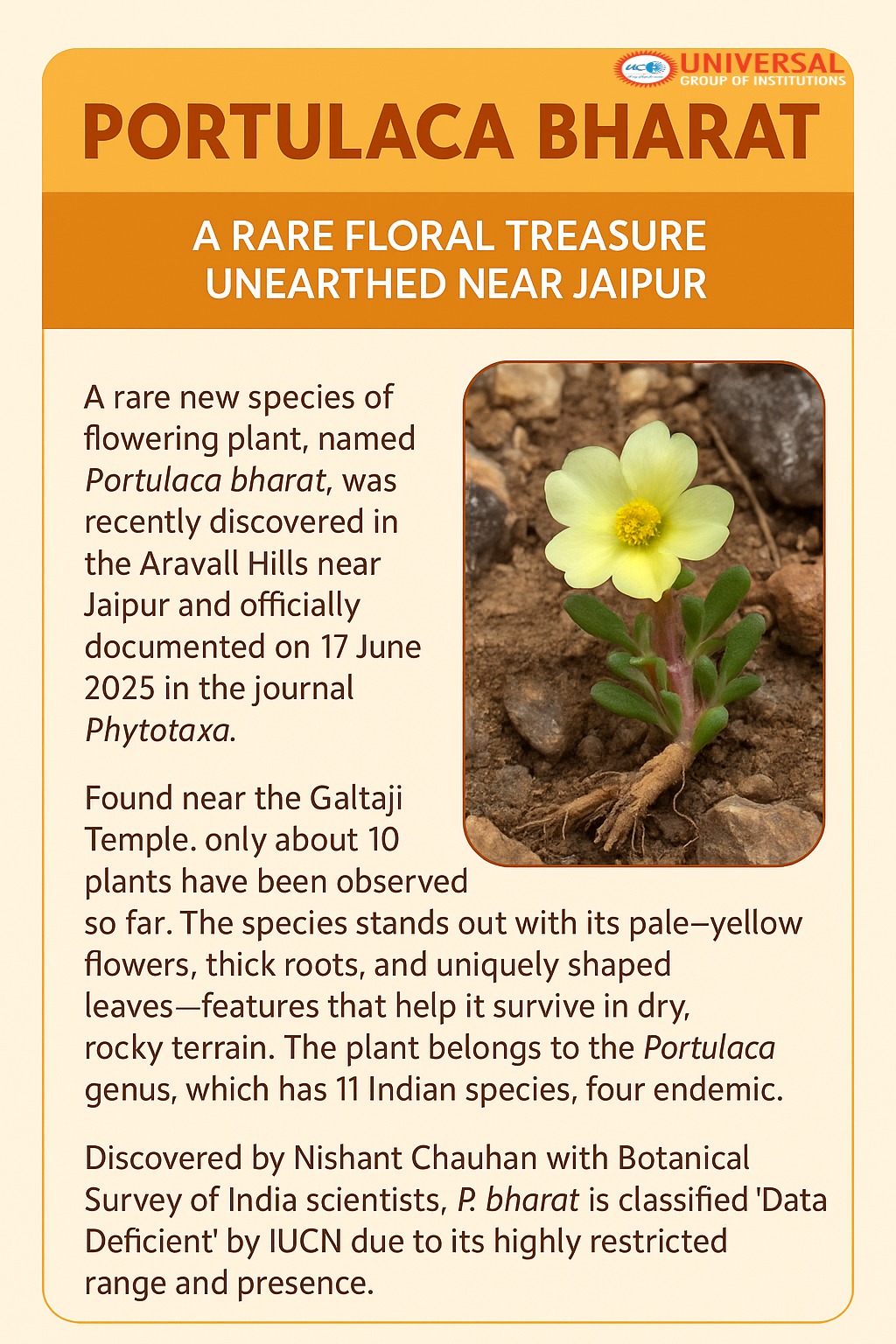Rare Portulaca Bharat Flower Found in Rajasthan
Portulaca bharat: A Rare Flower Discovered in Rajasthan’s Aravalis
In a fascinating discovery highlighting India’s rich biodiversity, scientists have identified a brand-new endemic species of flowering plant in the Aravalis near Jaipur. Named Portulaca bharat, the plant was officially recorded on 17 June 2025 in the scientific journal Phytotaxa. The name ‘bharat’ honours India’s rich ecological heritage and highlights the importance of preserving native biodiversity.
The plant was spotted during field surveys in the rocky terrain near Galtaji hills, an area known for its dry deciduous ecosystem. So far, only ten individual plants have been found in this single location, making this species extremely rare and vulnerable. It grows in tough conditions, surviving on limited water in stony soil—typical of the Aravalis range.
What makes Portulaca bharat unique are its distinctive morphological traits. It has soft yellow flowers that fade to white at the edges, opposite concave leaves, and tiny hair-like structures on its stamens. Thick roots and water-storing tissues help it endure drought-like conditions, showcasing its remarkable adaptation to its environment—a testament to the plant’s evolutionary biology.
This discovery was led by researcher Nishant Chauhan of the Satpura Biodiversity Conservation Society, along with scientists from the Botanical Survey of India—Amber Srivastava, Sudhanshu Shekhar Dash, and Sushil Kumar Singh. After being found in Jaipur, live specimens were carefully grown in Hamirpur and Lucknow under controlled conditions for study and verification, demonstrating successful ex situ conservation efforts.
Due to the limited number of specimens and its narrow habitat, Portulaca bharat has been marked as “Data Deficient” under the IUCN conservation guidelines. It is at risk from environmental changes, habitat destruction, and human interference. This discovery also draws attention to the Aravalis, one of the oldest mountain ranges in the world, which still holds many undiscovered natural wonders.
The Portulaca genus already includes 153 species worldwide, with 11 found in India. Four of these exhibit narrow endemism, meaning they grow nowhere else. The addition of Portulaca bharat adds to this unique botanical family and reminds us how much remains to be explored in the field of evolutionary biology.
Conclusion
The discovery of Portulaca bharat is a timely reminder of the hidden biodiversity that exists in familiar places. It underscores the need to protect India’s fragile ecosystems, especially in regions like the Aravalis, where rare endemic species might still be waiting to be found. This finding not only contributes to our understanding of plant diversity but also emphasizes the importance of continued field surveys and ex situ conservation efforts to preserve and study these unique life forms.




